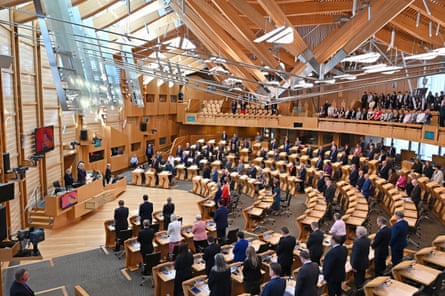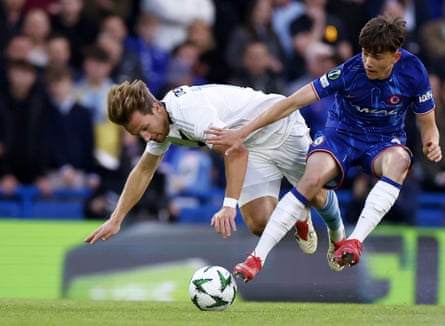
And so the year ends, as always seemed likely, with the bottom three places in the Premier League occupied by the three promoted sides. With Wolves and Crystal Palace resurgent and Everton under new ownership and having found the solidity that is always the key strength of Sean Dyche teams, the situation is bleak for the three currently in the relegation zone. Each will have their own reflections on the first half of the season but, more generally, the picture is worrying: the three promoted sides were relegated last season and the gulf between Premier League and Championship is coming to feel almost impossibly wide.
The bottom side Southampton are 10 points from safety. Realistically they probably need to average a point and a half a game from here to stay up – which is to say that they are as good as down. The two games since Russell Martin was sacked have shown an improvement, but even then battling performances at Fulham and Crystal Palace have yielded a single point. Perhaps they would have had a better chance of survival had they not been wedded to a high-risk passing style that kept on surrendering possession in dangerous areas but, in truth, this never looked anything like a Premier League squad. The priority now must be to acquire the six points they need to avoid breaking Derby’s record low of 11 points for the season.
Ipswich, six points better off even before Monday’s game against Chelsea, have had a slightly less dispiriting return to the Premier League with Omari Hutchinson, Leif Davis and, especially, Liam Delap looking as though they could prosper at the highest level. They’ve rarely been outclassed but have drawn too many games in which, with a sharper edge, they might have nicked something, and are yet to win a game at home.
Leicester perhaps have the best chance of staying up, and look more comfortable on the ball than their rivals in the bottom quarter of the table, but they have been far too open under Ruud van Nistelrooy. Even as they took four points from his first two games in charge, against West Ham and Brighton, there was a sense they had benefited from their opponents’ profligacy. They’ve conceded 19.2 shots per game in his six matches in charge so far and, although the trend is in the right direction despite playing Liverpool and Manchester City in their last two games, tightening up has come at a cost: they’ve scored just once in their last four matches. The likelihood is that they will be scrapping with Wolves, and possibly Everton, to avoid the final relegation slot.
It is true that in 2022-23 none of the promoted sides went down and all three – Fulham, Bournemouth and Nottingham Forest – continue to thrive. But Fulham and Bournemouth both had recent extended experience in the Premier League while Forest went on a spending spree that led ultimately to a four-point deduction for breaches of PSR; it’s not to suggest they acted cynically to point out that from their current position in second, that may look a worthwhile sacrifice. If Leicester, Ipswich and Southampton go down this season, that will be 10 of the last 15 promoted sides who have gone straight back down.
When the Premier League was first cut to 20 teams in 1996-97, the three promoted sides averaged 44.3 points. Last season it was just 22.0. A rolling five-year average shows that figure remaining constant at over 41 until 2004-05, then falling to 36 or 37 even before last year’s record low. This season the three promoted sides are on course to set a new record low of 21.7. At the same time, Sheffield United and Burnley, both relegated last season, are second and third in the Championship, with Leeds, relegated the season before leading the table.
The sense is of a mezzanine of clubs buoyed by the parachute payments they receive for three years after relegation, too good for the Championship but not good enough for the Premier League. Although the playing field in the second flight may be alleviated by proposals to scrap parachute payments, their removal would disincentivise investment from promoted teams and probably make it harder for them to stay in the Premier League.
Promotion to the best league in the world perhaps should be tough, but if survival effectively becomes impossible there are two major drawbacks. Firstly, the Premier League as a whole is diminished by a weak bottom end. And secondly, it’s become common to hear fans of Championship sides wonder whether promotion is really worth it.
Which raises fundamental questions. English football for over a century has been predicated on the concept of the pyramid, the idea that, through diligence, application and inspiration, teams can slowly rise and perhaps take their place among the elite. That is severely challenged if the distribution of resources is such that there are apparently unbridgeable gulfs between divisions. Quality at the top end is essential; the issue is how to smooth the slope so it does not come at the expense of the rich hinterlands that remain the distinguishing feature of the English game.
after newsletter promotion
This is an extract from Soccer with Jonathan Wilson, a weekly look from the Guardian US at the game in Europe and beyond. Subscribe for free here. Have a question for Jonathan? Email [email protected], and he’ll answer the best in a future edition
Source: theguardian.com



